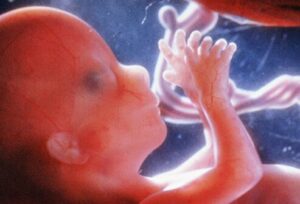A Christian friend of mine shocked me the other day with his ignorance of basic biology concerning preborn human beings. He stated that when we become a person is a matter of belief. He also confused and used interchangeably the terms life, a life, individual life, living cell, living human cell, and person. He seemed to argue that since not every living human cell is a human being, then we need not concern ourselves with the youngest human beings who are merely clumps of cells. He rightly argued that the legal definition of an “individual life” cannot be based on anyone’s belief, but should come from a definition that is “rational, science-based, and consistent.” However, he appears to be unaware that we already have, and operate on, such a definition.

Ignorance like my friend’s may be more common than one would imagine, so for the benefit of all, we will attempt to correct the record in this article. Let us begin with the basics of biology. When we become unique human individuals is not a matter of belief; it is a matter of settled science. We can prove that preborn humans at every stage of development are 1) living, 2) human, 3) whole human beings, and 4) unique human beings.
Living — Once the fertilization process is complete, the preborn are clearly alive. They exhibit the three characteristics of living things: They are growing through cellular reproduction, reacting to stimuli, and metabolizing food for energy. There is no dispute about whether something that exhibits all of these characteristics is alive.
Human — So, the preborn are living cells, but what kind of cells are they? Obviously, since living things reproduce after their own kind, they are human cells. It is not possible that two human parents can produce offspring that are not human but later become human. A preborn human, even as a zygote or blastocyst is still recognizable as human according to its distinctly human DNA.
Whole — We have established that the preborn are at least living human cells, but so are the skin cells that we scrub off in the shower every day. Are we killing innocent humans when we bathe? This question confuses parts and wholes. Even some pro-life people struggle because they have a vague impression in their minds of embryos developing like cars on an assembly line, constructed piece by piece. They have this notion that until the heart or some other functional part is attached, the preborn are not really whole individuals. But humans are not constructed. The embryo does not have a heart added in week three. She develops it from within herself. The preborn, even at one-cell old, is not a functional part of someone else’s body; she is her own whole body with her own functional parts. She is unifying those parts for the good of the whole and developing herself to the next stage.
Unique — Again, human development is not like construction; it is more like the old Polaroid photos. Imagine I take a Polaroid photo of my daughter Nadia. The white, square photo paper is ejected from the camera, and I look in disappointment at the blank paper. Thinking I have somehow missed the shot, I tear up the paper and throw it away. In so doing, did I throw away an actual unique picture of Nadia? Yes! The picture is a metaphor, of course, for a unique human being. Exposure is like fertilization, and once the fertilization process is complete, a unique human has come into existence. Once Nadia came into existence, she continued to develop the appearance of the girl we recognize today, but she could never have developed into Nick, no matter how much bad milk we fed her or how many manly toys we put in her crib. Nadia’s unique DNA, which defines her individual physique and personality traits, ensures that Nadia has been, is, and always will be Nadia. Given adequate nutrition and a proper environment, every unique human being progresses through a lifetime of development.
In summary, even atheists and agnostics admit that the preborn at every stage of development are human beings and that abortion kills a living, whole, unique member of the Homo sapiens community. No biology text disagrees (see below). They cannot deny biological facts.
Where we differ is in our beliefs about God. If God does not exist, then there is no basis for objective moral values and duties. They simply do not exist. If there is no God, then the idea that humans are intrinsically valuable, the idea of equal rights, and the idea that murder is wrong and ought to be prevented, are all just interesting musings of our highly evolved meat computers. In a world without God, we might as well kill all the kids we want, preborn or otherwise.
However, Christian philosopher William Lane Craig argues, “Good and bad, right and wrong, do exist. Just as our sense experience convinces us that the physical world is objectively real, our moral experience convinces us that moral values are objectively real.” Even the secular philosopher Michael Ruse admits, “The man who says that it is morally acceptable to rape little children is just as mistaken as the man who says 2+2=5.” It is beyond reasonable doubt that objective moral values and duties exist. Therefore, it is highly likely that God exists.
When it comes to abortion, it is a biological fact that preborn human beings are innocent victims, which makes the act of abortion morally wrong. Abortion is not medical care; it is murder. The rationale is inescapable. Either there is no God, so we can rape, we can steal, and we can abort babies with impunity; or there is a God, and we are in big trouble for protecting murder by abortion in our state.
Biological Facts
“Science has a very simple conception of man; as soon as he has been conceived, a man is a man.”
Jerome Lejeune, M.D., Ph.D., Professor for Fundamental Genetics, Hôpital des Enfants Malades, Paris, France
“Human embryos and human fetuses are human beings, each with their own unique genetic DNA.”
Ralph P. Miech, Associate Professor of Molecular Pharmacology, Brown University
“When fertilization is complete, a unique genetic human entity exists.”
C. Christopher Hook, M.D., Oncologist, Mayo Clinic Director of Ethics Education
“The status of the fetus has been elevated to that of a patient who, in large measure, can be given the same meticulous care that obstetricians provide for the pregnant woman.”
F. Gary Cunningham et al., Williams Obstetrics, 20th ed. (Appleton & Lange, 1997), p. 151.
“Although life is a continuous process, fertilization…is a critical landmark because, under ordinary circumstances, a new, genetically distinct human organism is formed when the chromosomes of the male and female pronuclei blend in the oocyte.”
Ronan O’Rahilly and Fabiola Müller, Human Embryology & Teratology, 3rd ed. (New York: Wiley-Liss, 2001), p. 8.
